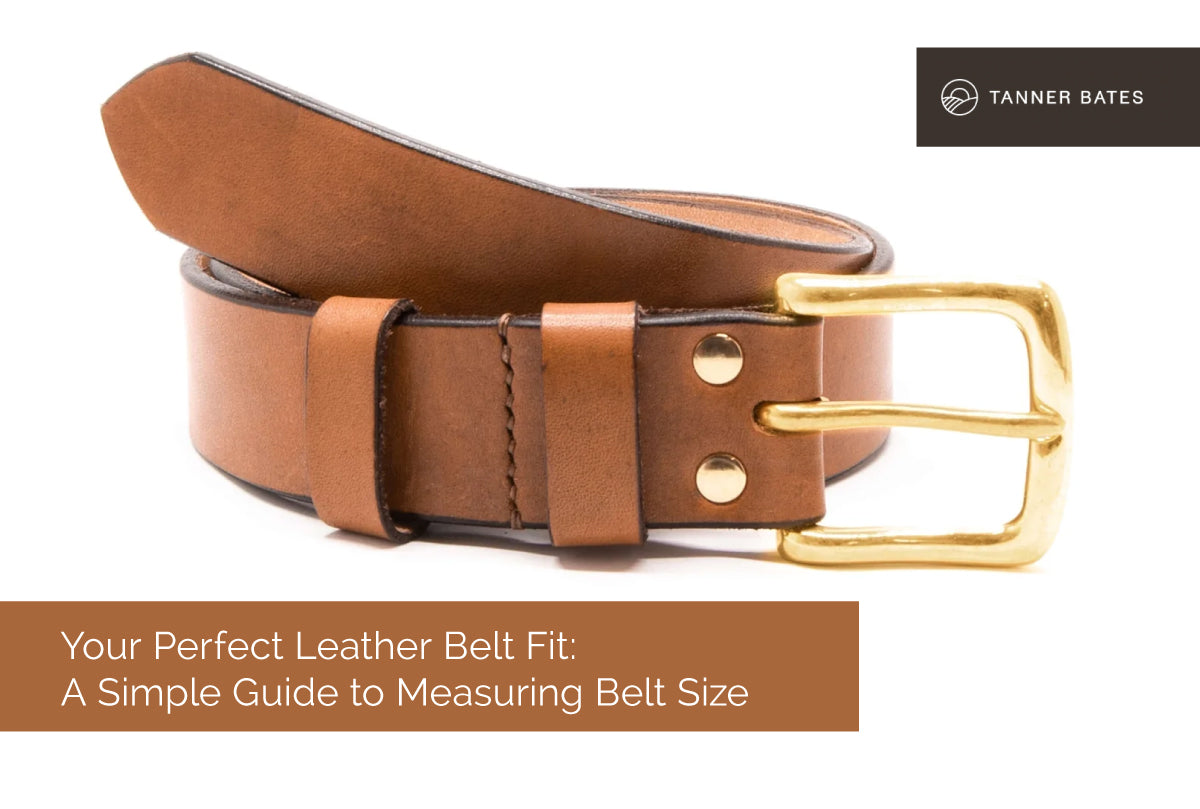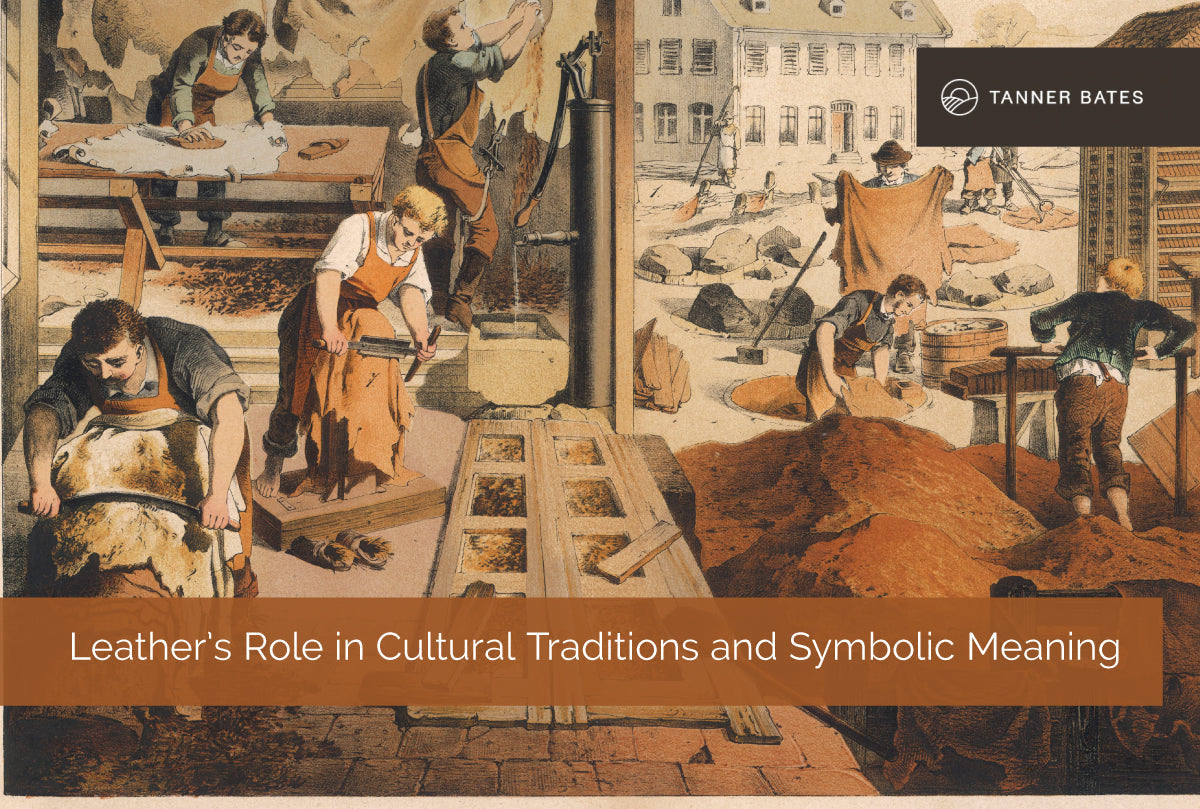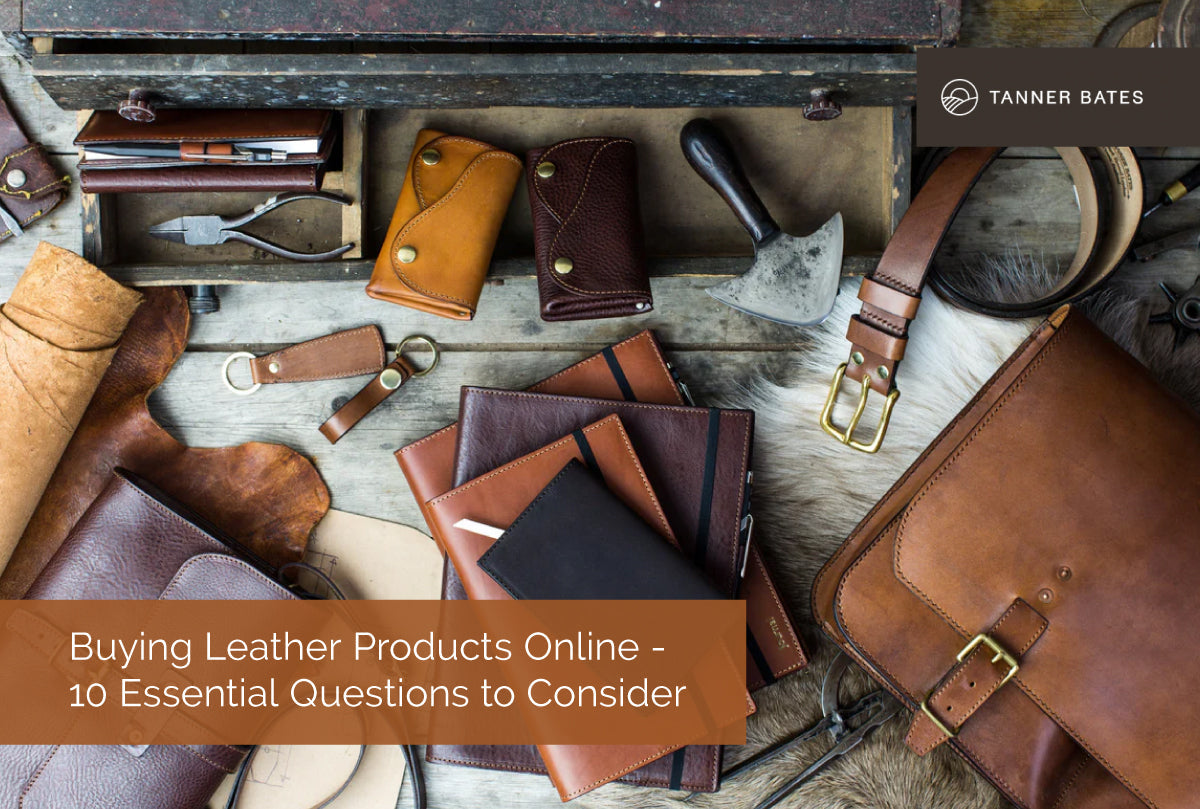September 02, 2024
Ethical Leather Options: Full Grain Vegetable- Tanned vs. Synthetic Materials
As awareness of environmental and ethical issues grows, consumers are increasingly interested in where and how the products they buy are made. This is especially true in the fashion industry, where the demand for sustainable and ethical options is changing the market. From clothing to accessories, the materials used are under scrutiny, with leather being a major focus.
This blog will explore two popular leather options: full-grain vegetable-tanned leather and synthetic materials. We will compare their sustainability, ethical implications, durability, and aesthetic appeal to help you choose the best material for your needs.
Our Commitment at Tanner Bates
At
Tanner Bates, we proudly use full-grain vegetable-tanned leather in our products. This choice reflects our commitment to ethical sourcing and sustainable practices, ensuring that our leather goods are not only of the highest quality but also align with our values and those of our customers.
Understanding Full Grain Vegetable-Tanned Leather
What is Full-Grain Vegetable-Tanned Leather?
Full-grain vegetable-tanned leather is high-quality leather made from the outermost layer of the hide, where the natural grain remains intact. The vegetable tanning process uses tannins from tree bark and other organic materials, a method that has been used for centuries. This natural process takes several weeks, resulting in leather that is durable and long-lasting and develops a unique patina over time.
Ethical and Environmental Benefits
One of the key benefits of vegetable-tanned leather is its sustainability. The tanning process uses natural, biodegradable materials, making it more environmentally friendly than other leather tanning methods that rely on chemicals.
Additionally, full-grain leather is known for its durability, meaning products made from this material can last for decades, reducing the need for frequent replacements and minimising waste.
Aesthetic Qualities
Full-grain leather is prized for its aesthetic appeal. The natural grain of the leather adds character, and as it ages, it develops a rich patina that enhances its appearance. Each piece of full-grain leather is unique, with its own markings and variations, making every product truly one-of-a-kind.
Exploring Synthetic Leather Materials
What is Synthetic Leather?
Synthetic leather, also known as faux leather, includes materials like PU (polyurethane) leather and PVC (polyvinyl chloride) leather. These materials are designed to mimic the look and feel of real leather but are made from plastic-based substances. Synthetic leather is widely used in the fashion industry as an animal-free alternative to genuine leather.
Ethical Considerations
Synthetic leather is often chosen for its ethical appeal as an animal-free option. However, it comes with environmental drawbacks. The production of synthetic leather involves the use of plastics and chemicals, which can contribute to pollution and are not biodegradable. The disposal of synthetic leather products also poses environmental challenges, as they do not break down naturally and can persist in landfills for many years.
Aesthetic and Functional Qualities
While synthetic leather can closely resemble real leather in appearance, it often lacks the same level of durability and ageing characteristics. Synthetic materials can be prone to cracking and peeling over time, and they do not develop the rich patina that is characteristic of full-grain leather. However, synthetic leather is typically easier to clean and maintain, making it a practical choice for some applications.
Full Grain Vegetable-Tanned Leather vs. Synthetic Materials – A Comparative Analysis
Sustainability and Environmental Impact
When comparing full-grain vegetable-tanned leather to synthetic materials, sustainability is a key factor. Full-grain leather is made using natural materials and a tanning process that is environmentally friendly. In contrast, synthetic leather is made from plastics that are derived from non-renewable resources and can have a significant environmental impact due to their production and disposal.
Ethical Implications
The ethical implications of using animal products versus synthetic alternatives are complex. While synthetic leather avoids the use of animal hides, it contributes to plastic pollution. On the other hand, all the hides we use at Tanner Bates are byproducts of the meat industry, ensuring that no animals are raised solely for their leather.
Additionally, the tree bark used in the vegetable tanning process is a byproduct of the timber industry, particularly in the case of oak bark tanned Devon leather. This means that the materials we use are sourced from what would otherwise be waste, making them a more sustainable choice.
By creating beautiful and long-lasting products from these natural materials, which are ultimately biodegradable at the end of their life, we offer a much more environmentally friendly alternative to synthetic materials. Synthetic leather, on the other hand, is made from new plastics that do not break down in landfills, further contributing to environmental issues.
Longevity and Durability
Full-grain leather is known for its longevity and ability to withstand wear and tear, often lasting for decades with proper care. Synthetic leather, while durable in its own right, typically has a shorter lifespan and may require more frequent replacement.
Aesthetic Appeal and Aging
Full-grain leather's natural ageing process and development of a unique patina are unmatched by synthetic materials. While initially appealing, synthetic leather does not age in the same way and may degrade over time.
Why Tanner Bates Chooses Full Grain Vegetable-Tanned Leather
Our Commitment to Craftsmanship
At
Tanner Bates, our commitment to craftsmanship and ethical practices is reflected in our choice of materials. We believe that full-grain vegetable-tanned leather aligns with our values, offering our customers a product that is both high-quality and environmentally responsible.
The Benefits for Our Customers
By choosing Tanner Bates products, our customers are investing in items that are durable, sustainable, and aesthetically unique. Our leather goods are designed to last, providing long-term value and a timeless appeal that synthetic materials cannot match.
Testimonials and Case Studies
Many of our customers have shared their satisfaction with Tanner Bates products, noting how well our leather goods age and the ethical peace of mind they provide. These testimonials highlight the benefits of choosing full-grain vegetable-tanned leather over synthetic alternatives.
Conclusion
Full-grain vegetable-tanned leather offers numerous benefits over synthetic materials, including sustainability, durability, and unique aesthetic qualities. While synthetic leather provides an animal-free alternative, it falls short in terms of environmental impact and longevity.
We encourage you to explore the
Tanner Bates collection and discover the beauty and sustainability of full-grain vegetable-tanned leather. Make an informed choice for your next leather purchase, and invest in products that reflect your commitment to ethical and sustainable fashion.
FAQs
1. Why is full-grain vegetable-tanned leather considered more sustainable than synthetic leather?
Full-grain vegetable-tanned leather is made using natural, biodegradable materials and a tanning process that minimises environmental harm. In contrast, synthetic leather is made from plastics that are not biodegradable and contribute to pollution.
2. How does full-grain leather compare to synthetic materials in terms of durability?
Full-grain leather is known for its exceptional durability and ability to age beautifully over time. Synthetic materials, while durable, typically have a shorter lifespan and may crack or peel with extended use.
3. What are the environmental impacts of synthetic leather production?
The production of synthetic leather involves the use of plastics and chemicals, which can contribute to pollution. Additionally, synthetic leather is not biodegradable and can persist in landfills for many years.
4. How does full-grain vegetable-tanned leather age over time?
Full-grain leather develops a rich patina as it ages, adding to its character and appeal. Each piece of leather is unique, and the ageing process enhances its natural beauty.
5. Is synthetic leather truly an ethical alternative?
While synthetic leather avoids the use of animal hides, it raises environmental concerns due to its plastic content and production process. The ethical implications depend on the consumer's values regarding animal welfare and environmental impact.
6. What makes Tanner Bates' leather products unique compared to other brands?
Tanner Bates specialises in full-grain vegetable-tanned leather, reflecting our commitment to traditional craftsmanship and ethical practices. Our products are designed to be durable, sustainable, and aesthetically unique, providing long-term value for our customers.









